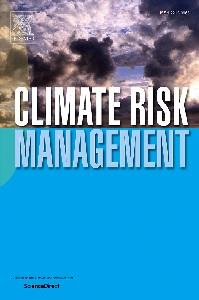Abstract
There is a growing interest in understanding the linkages between the use of weather and climate information services (WCIS) and the adoption of climate-smart agricultural (CSA) practices. At present, however, there is little guidance on the impact of the use of WCIS on the adoption of CSA practices. This study examines this nexus by focusing on mobile phone delivery channels of weather forecasts through the ESOKO platform in the Upper West Region of Ghana. We employ a simultaneous equation system with a recursive bivariate probit model in which both the outcome (CSA practices) and the endogenous treatment variable (WCIS) are binary. We found the use of WCIS is endogenously treated to farmers in the adoption models of pest-resistant crops, water management, and multiple cropping practices. The use of WCIS significantly increases the adoption of water management and multiple cropping practices by 6.8% and 5.6% respectively. We found, however, no statistical significance on the effects of WCIS on the adoption rates of erosion control, pest-resistant crops, and integrated pest management. Our findings underscore the importance of the source of information on agricultural practices (e.g. radio, TV), farmers’ characteristics (e.g. gender, age) and their perceptions of climate change in the decision to use WCIS. Pathways for promoting CSA practices should address the adoption barriers inherent to farmers’ characteristics and their livelihood strategies (e.g. livestock, income diversification).

